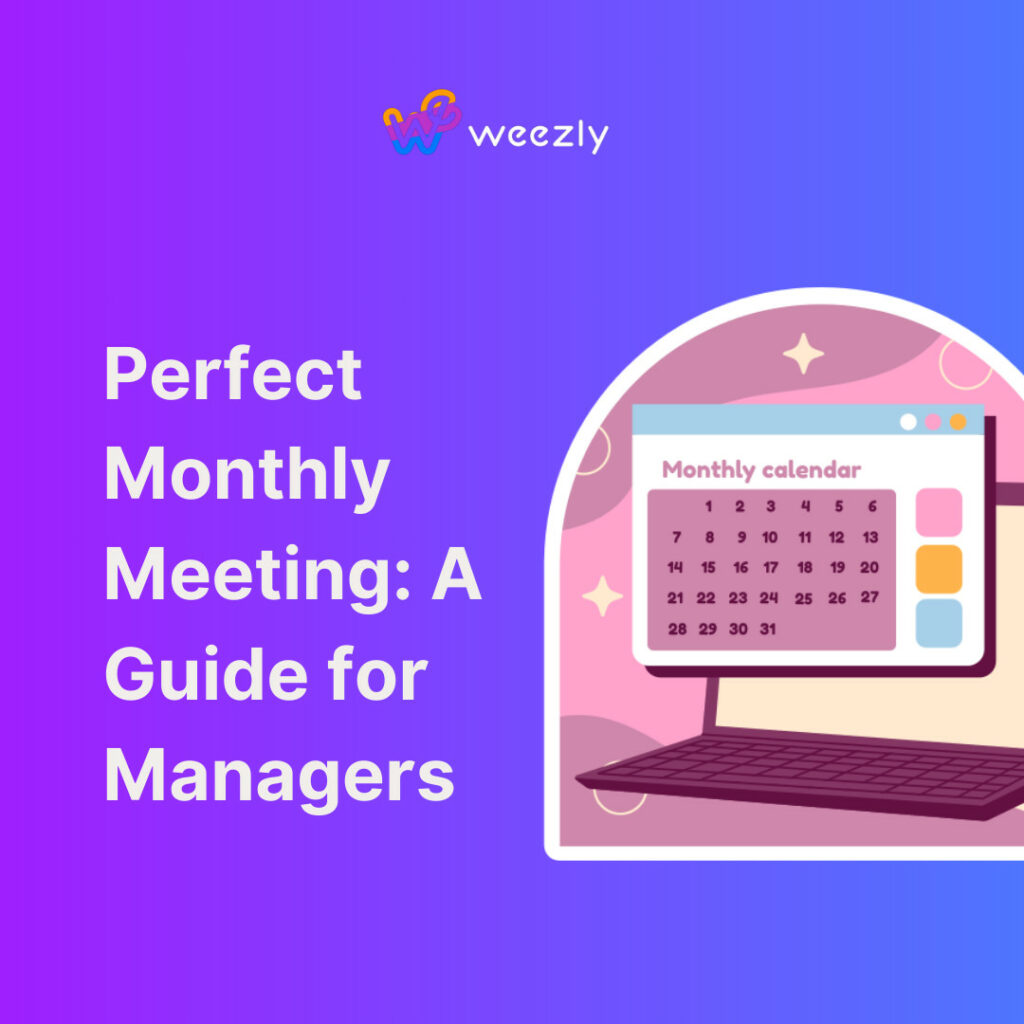Every manager knows the importance of a well-executed meeting. It’s the golden opportunity to align goals, discuss challenges, and boost team morale. However, the frequent complaint we hear is: “Meetings are a waste of time.” This sentiment arises when meetings lack purpose or structure. But with the right approach, you can turn these gatherings into productive, motivational, and even inspirational sessions. So, how can you ensure that your monthly meeting isn’t just another calendar event but a driving force for productivity and team cohesion?
Let’s delve deep.

Planning Your Perfect Monthly Meeting: A Guide for Managers
In the hustle and bustle of corporate life, time remains constant as a precious commodity. As managers, it’s imperative to have an effective strategy for scheduling monthly meetings. Not only does this reinforce transparency in communication but also ensures optimal productivity. This guide will walk you through the process of planning your perfect monthly meeting.
Define the Purpose
Every meeting should have a clear purpose. For monthly meetings, managers should be looking to:
- Review the previous month’s achievements and challenges.
- Set clear goals for the coming month.
- Address any team concerns.
- Celebrate successes and recognize top performers.
Prepare an Agenda
A well-defined agenda is your roadmap to a successful meeting. Send the agenda to team members a week in advance. This way, they can come prepared with their input. An ideal agenda for a monthly meeting might look something like this:
- Introduction (5 minutes): A brief outline of the meeting’s objectives.
- Review of the previous month (15 minutes): Discuss achievements, KPIs met, challenges faced, etc.
- Departmental Updates (20 minutes): Each department head shares their updates.
- Upcoming Projects (10 minutes): A brief on projects for the next month.
- Team Feedback Session (10 minutes): Open the floor for team members to share concerns or suggestions.
- Recognition and Rewards (10 minutes): Acknowledge the top performers.
- Conclusion (5 minutes): Summarize the discussions and set the tone for the next month.
Remember, the idea is not to stretch the meeting but to make it compact and impactful. Adjust the timing based on your team’s needs.
Choose the Right Tools
There’s a famous saying, “For every minute spent organizing, an hour is earned.” The same goes for meetings. Utilize tools like Asana for task management, Zoom for virtual meetings, and Miro for brainstorming. These tools can help streamline discussions and keep everyone on the same page.
Selecting An Online Scheduling tool

Nowadays, with remote working becoming increasingly commonplace, numerous online planning tools are available. It is critical, though, to pick one that suits your requirements best. Here are a few options:
- Weezly: Coming into the limelight recently, Weezly offers robust features, splendid support, multilingual capabilities, and brilliant customization facilities.
- Calendly: A classic favorite among many due to its user-friendly interface and seamless integration with other software such as Google Calendar. If you wish to sync Calendly with Google Calendar, you may find this step-by-step guide particularly instructive.
- Oncehub: OnceHub has various plugins that make it simple to schedule meetings, streamline appointment bookings, and plan calls directly from your website. For an extensive review of OnceHub, you can refer here.
- Setmore: Setmore provides excellent automation features; here’s a comprehensive review of Setmore, and if interested to compare how this fares against other applications, check out Setmore vs. Weezly.
Foster an Open Communication Environment
According to a study by Harvard Business Review, open communication is a key factor in team success. Encourage team members to voice their opinions, concerns, or suggestions. As a manager, it’s crucial to create an environment where team members feel heard and valued.
Stay Focused on the Agenda
While discussions can sometimes go off-track, it’s essential to bring the focus back to the main agenda. Allocate specific times for each topic and stick to them. If a particular issue requires more attention, note it down and schedule a separate meeting to address it.
Follow-up
A meeting without follow-up is like a car without fuel. It won’t lead you anywhere. After the meeting, send out a summary of what was discussed, decisions made, and action items. Tools like Slack can be great for quick follow-ups and ensuring everyone is aligned.
Continuously Improve
Always seek feedback on how to make meetings more effective. This could be in terms of timing, agenda items, or even the frequency of meetings. As they say, there’s always room for improvement.
Conclusion

Monthly meetings are essential touchpoints for managers and their teams. They are the platforms to align goals, celebrate successes, and address challenges. As a manager, the onus is on you to make these meetings effective.
By defining a clear purpose, setting an agenda, leveraging the right tools, fostering open communication, staying focused, ensuring follow-ups, and continually seeking improvement, you can make your monthly meetings not just productive but also something that the team looks forward to.
Remember, it’s not about the duration but the quality of the discussion that counts. So, the next time you schedule your monthly meeting, use this guide as a checklist and watch your team’s productivity and morale soar!





